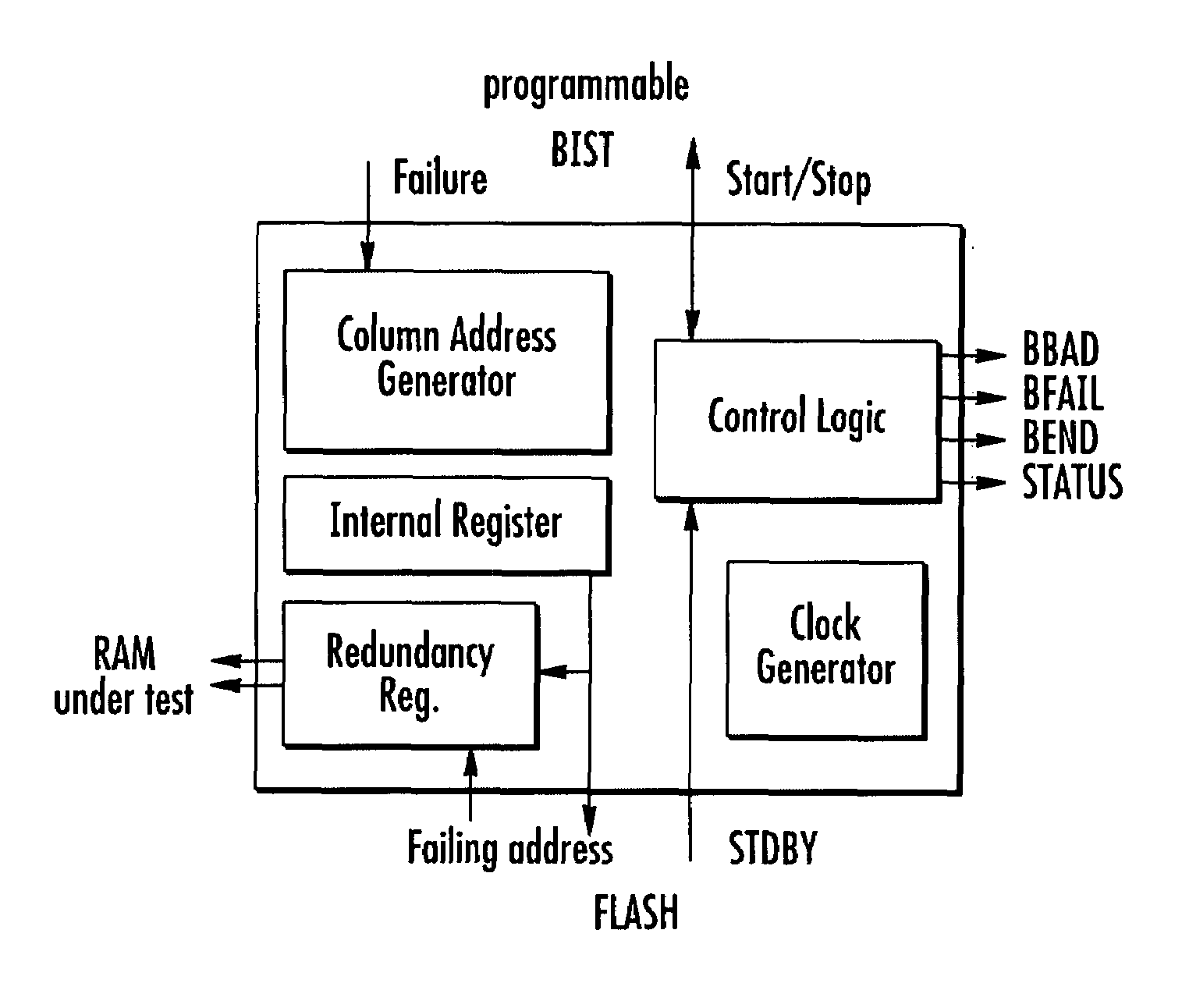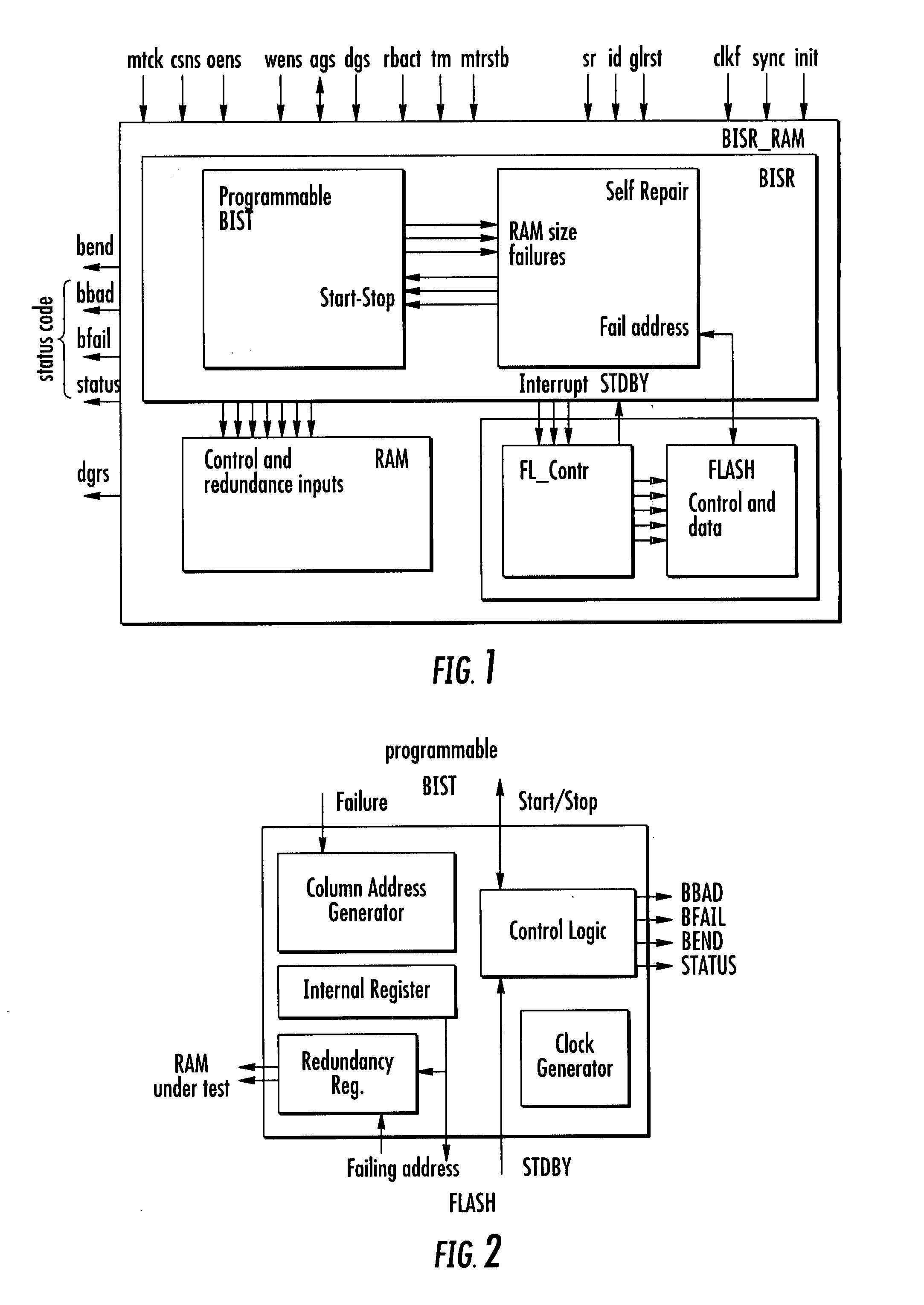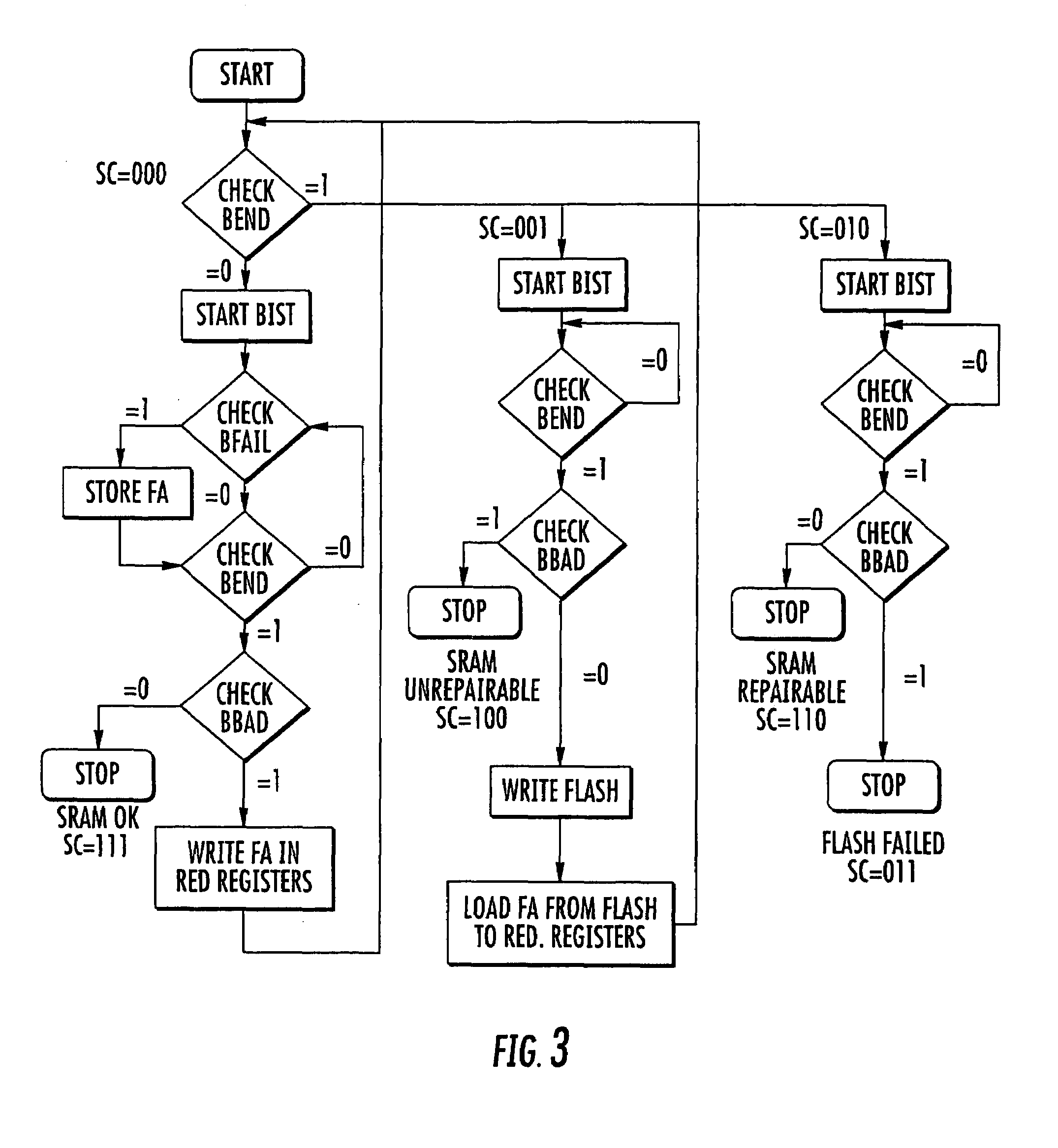Programmable multi-mode built-in self-test and self-repair structure for embedded memory arrays
a memory array and self-repair technology, applied in the direction of electronic circuit testing, static storage, measurement devices, etc., can solve the problems of increased cost and complexity, many types of complex cell-interaction faults are frequently occurring, and the probability of defects inside these extremely compact on-board data storage subsystems is high, so as to achieve outstanding flexibility of the bisr architecture and speed up the bisr procedure
- Summary
- Abstract
- Description
- Claims
- Application Information
AI Technical Summary
Benefits of technology
Problems solved by technology
Method used
Image
Examples
Embodiment Construction
[0026]The architecture of the BISR machine of the present invention is shown in the functional block diagram of FIG. 1. The core of the BISR machine is the SELF-REPAIR block, that manages the enabling of the single programmable BIST that is used for testing the currently selected memory array RAM, elaborates the redundancy information and transfers them to the correct input ports of the RAM array being tested and repaired, and manages the communication with the nonvolatile memory FLASH that eventually stores the substituted addresses of the RAM.
[0027]In the initial phase of a BISR session, the programmable BIST executes the test on the selected RAM by stimulating specific data pattern, related to a selected test algorithm. By reading the output data from the RAM and comparing them with the expected data, previously written in the memory under test and applied on the input memory ports by the programmable BIST, this allows the detection of any failing address and the identification o...
PUM
 Login to View More
Login to View More Abstract
Description
Claims
Application Information
 Login to View More
Login to View More - R&D
- Intellectual Property
- Life Sciences
- Materials
- Tech Scout
- Unparalleled Data Quality
- Higher Quality Content
- 60% Fewer Hallucinations
Browse by: Latest US Patents, China's latest patents, Technical Efficacy Thesaurus, Application Domain, Technology Topic, Popular Technical Reports.
© 2025 PatSnap. All rights reserved.Legal|Privacy policy|Modern Slavery Act Transparency Statement|Sitemap|About US| Contact US: help@patsnap.com



